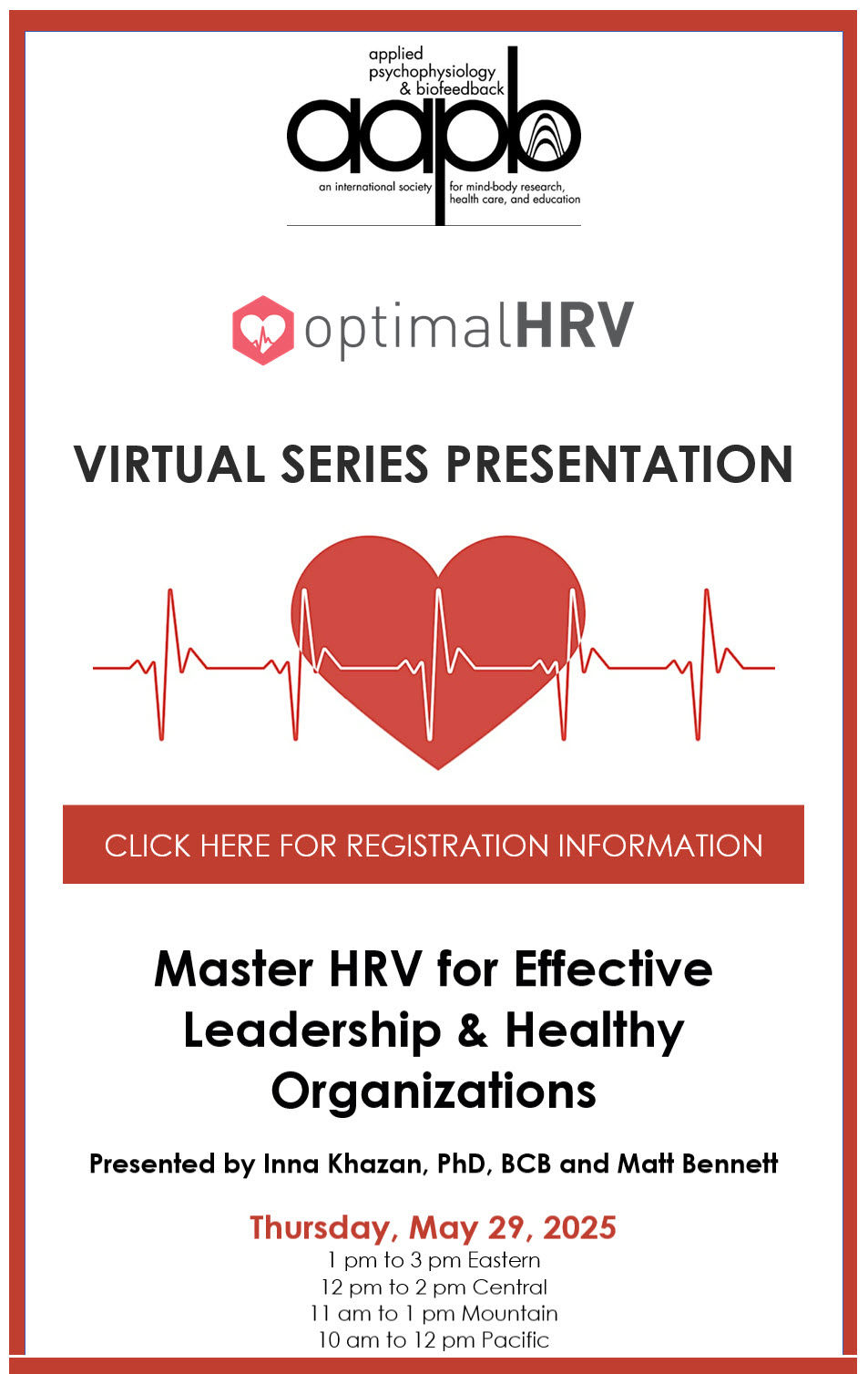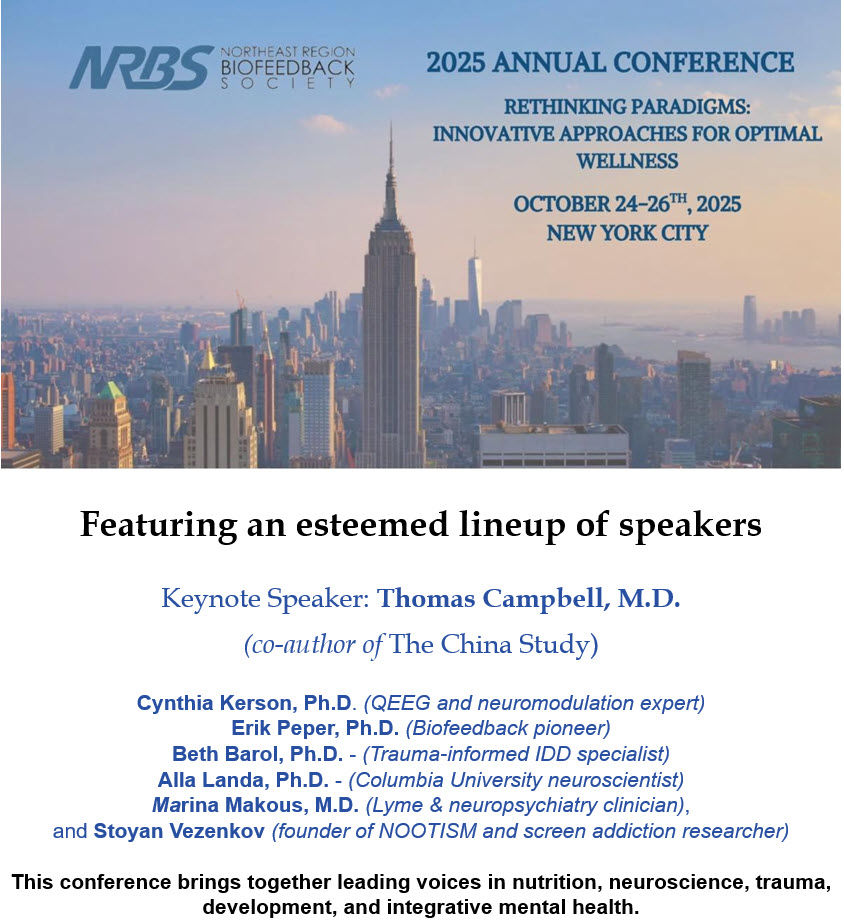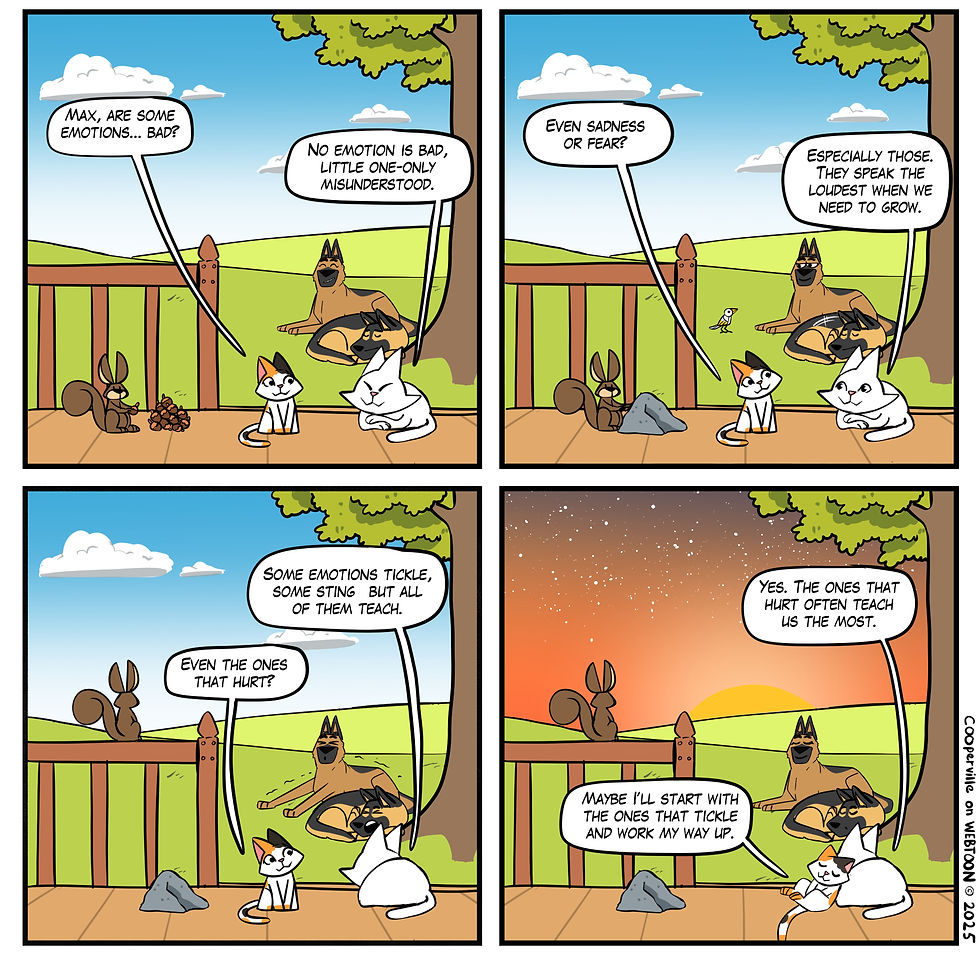5-Min Science: Emotional Regulation
- BioSource Faculty
- May 15
- 9 min read
Updated: Aug 1

This post critiques David Robson’s NewScientist essay, "How to harness your emotions for a happier, calmer life."
Robson draws on the research of Ethan Kross and others, and presents a comprehensive overview of strategies for enhancing emotional regulation—the ability to monitor, evaluate, and modify emotional reactions in real time. This skill is linked to improved physical health, psychological resilience, and social functioning. The essay emphasizes that emotions are malleable, not fixed traits, and highlights that believing in their changeability predicts greater well-being and adaptive coping.
His foundational evidence comes from longitudinal studies, notably the Dunedin Multidisciplinary Health and Development Study, which revealed that poor emotional regulation in early childhood predicts worse life outcomes, including lower educational attainment, increased criminality, financial instability, and accelerated biological aging. This supports the idea that emotional skills play a critical role not just in mental health but in broader life trajectories.
Emotional Self-Regulation Strategies
Robson endorses these strategies:
Cognitive reappraisal: the reinterpretation of an emotional stimulus to alter its emotional impact.
Self-distancing: viewing one’s experience from a third-person perspective to reduce emotional reactivity.
Sensory strategies: using music, nature exposure, or comforting routines (e.g., baking, bathing) to shift mood states.
Environmental modifications: leveraging nature or even nature imagery to reduce rumination.
Belief change: encouraging the implicit theory that emotions are changeable increases the use of adaptive strategies like reappraisal.
The essay also defends contextual avoidance—deliberate temporary emotional suppression—as a potentially beneficial, short-term coping mechanism, especially during acute stress or bereavement. Importantly, emotional avoidance is not equated with repression but with adaptive compartmentalization.
A Mindfulness Critique
Mindfulness emphasizes non-judgmental awareness and acceptance of emotional states rather than altering, avoiding, or distancing from them.
There Are No Negative Emotions
Robson invites readers to view certain feelings (like anger or envy) as “bad” or negative states that must be managed. This framing clashes with a fundamental principle of mindfulness: nonjudgmental observation of one’s present-moment experience. In mindfulness-based teachings, every emotion is approached without labeling it good or bad. As Jon Kabat-Zinn famously defines, mindfulness means “paying attention in a particular way: on purpose, in the present moment, and nonjudgmentally.”
Embrace Emotional Experience
The advocacy of emotional avoidance, even if temporary, contradicts the consensus in mindfulness-based interventions, where avoidance is viewed as a risk factor for exacerbating distress (Hayes et al., 2006).
Observe Emotions; Don't Reframe or Suppress Them
Self-distancing and third-person self-talk, though empirically validated, may resemble cognitive defusion, but differ in intent: mindfulness aims to observe emotions, not cognitively reframe or suppress them.
Cognitive reappraisal, while effective, involves top-down control, whereas mindfulness fosters bottom-up awareness of emotion without immediate reinterpretation (Chambers et al., 2009).
Consensus Science
Robson's perspective is not fully supported by consensus science.
Emotional Avoidance
“...people who turned their thoughts away from their grief and actively avoided reminders reported less negative emotion in the long term. ‘I think this notion that avoidance is always harmful is, in and of itself, a harmful notion,’ he says.”
The claim that emotional avoidance can lead to long-term improvements in grief outcomes lacks robust generalizability. Most bereavement research supports meaning-making and emotional processing as central to healthy adjustment (Bonanno & Kaltman, 2001). Dr. Zachary Meehan cautions that avoidance belongs in the short-term strategy toolbox. For example, he encourages adolescents to push away intrusive thoughts about social anxiety during a math test. However, they can't push them away forever. They eventually need to address them.
Pushing Emotions Around
“Science has identified dozens of tools that can push our emotions around.”
Dozens of Tools
The notion that “we have dozens of tools” may mislead readers to believe these strategies are equally effective, when research shows that context sensitivity, personality traits, and neurocognitive profiles moderate effectiveness (Aldao et al., 2010).
Don't Try to Control the Uncontrollable
Khazan (2019) cautions that we cannot control thoughts (e.g., don't think about a white bear) or emotions (e.g., anxiety), although people believe that they should. Distraction and suppression tactics do not work in the long run, can increase unwanted thoughts and emotions, and this failure can reduce perceived self-efficacy. Moreover, these futile attempts deplete the glucose needed to fuel adaptive responses.
You use up glucose on tasks that are not under your control, namely, suppressing your difficult thoughts and emotions, and then you do not have adequate resources left to exercise control over tasks that are otherwise controllable: your actions in response to these difficult thoughts and feelings (Khazan, 2019, p. 137).
Khazan (2019) likens struggling with uncontrollable thoughts and feelings to thrashing in quicksand. Instead of flailing and sinking deeper into several feet of water, you can lie flat and paddle to safety. Graphic © Cory Thoman/Dreamstime.com.

The ability to control emotions in the moment is a complex process that is not fully under conscious control. Real-time emotional control is often limited by the speed and unpredictability of emotional responses, making it difficult to exert control instantaneously, especially under time pressure or rapidly changing circumstances (Kohn et al., 2014).
Furthermore, while cognitive control mechanisms can influence emotional responses, these systems are not always immediately accessible or effective in the heat of the moment, as emotional and cognitive control systems overlap but are not perfectly synchronized (Ford et al., 2018).
Anyone Can Learn Emotional Regulation
“After accepting that emotions are within our control, anyone can learn to apply cognitive reappraisal, along with many other strategies to cope with negative feelings and boost positive ones.”
While promoting a growth mindset is empirically supported (Tamir et al., 2007), the implication that “anyone” can learn emotional regulation presumes a level of cognitive flexibility and insight that all individuals may not share. This generalization fails to account for developmental, clinical, and cultural constraints on emotional modulation (Kring & Sloan, 2009).
Summary
David Robson’s essay “How to harness your emotions for a happier, calmer life” draws on psychological research to present a toolkit for emotion regulation, emphasizing strategies like cognitive reappraisal, self-distancing, sensory modulation, and belief in emotional malleability. He argues that emotions are more elastic than traditionally assumed and can be reshaped for better mental and physical health outcomes. While the essay draws on empirical research and offers helpful strategies for many readers, it often frames emotions in evaluative terms—such as “bad” or “negative”—which runs counter to the foundational principle of nonjudgmental awareness central to mindfulness-based approaches.
Moreover, the essay occasionally overgeneralizes its claims. It suggests that avoidance may yield long-term benefits in grief, that anyone can master their emotional life through experimentation, and that a wide array of strategies are equally effective. These assertions, while rhetorically engaging, lack consistent empirical backing and ignore individual differences in psychopathology, cultural context, and neurocognitive variability. A mindfulness-informed framework would caution against such judgments and instead emphasize open, non-evaluative awareness of emotional states as they arise, without categorizing them as problematic or requiring immediate modification.
Key Takeaways
Labeling emotions as “negative” contradicts mindfulness principles by introducing judgment, which fosters resistance and intensifies suffering. Mindfulness teaches open observation without categorization.
Claims about emotional avoidance leading to long-term relief in grief lack broad empirical support; the literature emphasizes emotional engagement and meaning-making for resilient bereavement outcomes.
Statements implying universal emotional mastery overlook neurodevelopmental, clinical, and cultural variability and may set unrealistic expectations for individuals with limited cognitive flexibility or access to therapeutic tools.
Not all emotion regulation strategies are equally effective. Their impact depends on context, personality traits, emotional intensity, and the presence of psychological disorders.
Mindfulness offers an alternative framework grounded in acceptance, present-moment awareness, and non-reactivity, prioritizing the relationship with emotions over attempts to control them.
Glossary
acceptance: the willingness to allow emotions and thoughts to arise without trying to change, suppress, or judge them.
belief change: the process of shifting one's implicit theories about emotions—from viewing them as fixed and uncontrollable to seeing them as malleable and subject to intentional regulation.
cognitive flexibility: the mental ability to adapt thinking and behavior in response to shifting goals or environmental stimuli.
cognitive reappraisal: the process of changing one’s interpretation of a situation to alter its emotional impact.
contextual avoidance: the deliberate and temporary withdrawal from emotional content when environmental demands make full engagement maladaptive or overwhelming; distinguished from chronic or rigid avoidance.
cultural context: the social, linguistic, and historical environment that influences how individuals experience and express emotions.
Dunedin Multidisciplinary Health and Development Study: a longitudinal cohort study that began in the early 1970s in Dunedin, New Zealand, tracking over 1,000 individuals from birth into midlife to investigate developmental, psychological, and health trajectories.
emotional avoidance: the effort to evade, suppress, or disengage from unwanted emotional states, often linked to short-term relief but long-term distress.
emotional engagement: the active willingness to feel, explore, and make sense of emotions as part of psychological processing.
emotional malleability: the belief or capacity that emotional states can be altered through effort, learning, or contextual change.
emotion regulation: the ability to influence, manage, or modify the experience or expression of emotion using cognitive or behavioral strategies.
environmental modifications: changes to one’s physical surroundings—such as spending time in nature or watching wildlife videos—used to shift mood and reduce repetitive negative thinking by altering contextual stimuli.
evaluation (emotional): judging emotions as good or bad, desirable or undesirable—something mindfulness practice aims to avoid.
judgment: assigning value to internal experiences, often reinforcing resistance or avoidance.
meaning-making: the cognitive and emotional process through which individuals interpret and find significance in life events, especially adversity or loss.
mindfulness: the practice of paying attention deliberately, in the present moment, and without judgment to one's thoughts, emotions, and sensations.
neurocognitive variability: the differences in brain-based processes, such as attention, memory, and executive control, that affect how individuals regulate emotion.
nonjudgmental awareness: the core mindfulness attitude of observing thoughts and emotions without labeling them as right or wrong.
psychopathology: the study or presence of mental disorders, which may alter how emotion regulation strategies function across individuals.
self-distancing: the strategy of viewing one’s emotional experiences from a third-person perspective to reduce reactivity and enhance reflection.
sensory modulation: the use of sensory input (e.g., music, nature, touch) to shift emotional states through physiological or perceptual mechanisms.
sensory strategies: intentional use of sensory input, such as music, touch, or thermal comfort (e.g., soaking in a warm bath), to regulate emotional states by engaging neural systems involved in stress and reward.
third-person self-talk: a form of self-distancing in which individuals refer to themselves by name or with third-person pronouns when reflecting on emotional experiences, shown to reduce affective intensity and enhance self-regulation.
References
Aldao, A., Nolen-Hoeksema, S., & Schweizer, S. (2010). Emotion-regulation strategies across psychopathology: A meta-analytic review. Clinical Psychology Review, 30(2), 217–237. https://doi.org/10.1016/j.cpr.2009.11.004
Bishop, S. R., Lau, M., Shapiro, S., Carlson, L., Anderson, N. D., Carmody, J., Segal, Z. V., Abbey, S., Speca, M., Velting, D., & Devins, G. (2004). Mindfulness: A proposed operational definition. Clinical Psychology: Science and Practice, 11(3), 230–241. https://doi.org/10.1093/clipsy.bph077
Bonanno, G. A., & Kaltman, S. (2001). The varieties of grief experience. Clinical Psychology Review, 21(5), 705–734. https://doi.org/10.1016/S0272-7358(00)00062-3
Farb, N. A., Anderson, A. K., Mayberg, H. S., Bean, J., McKeon, D., & Segal, Z. V. (2010). Minding one’s emotions: Mindfulness training alters the neural expression of sadness. Emotion, 10(1), 25–33. https://doi.org/10.1037/a0017151
Ford, B. Q., Lam, P., John, O. P., & Mauss, I. B. (2018). Beliefs about the ability to control specific emotions. Emotion, 18(1), 1–12. https://doi.org/10.1037/emo0000324
Gross, J. J., & John, O. P. (2003). Individual differences in two emotion regulation processes: Implications for affect, relationships, and well-being. Journal of Personality and Social Psychology, 85(2), 348–362. https://doi.org/10.1037/0022-3514.85.2.348
Hayes, S. C., Strosahl, K. D., & Wilson, K. G. (1999). Acceptance and Commitment Therapy: An experiential approach to behavior change. Guilford Press.
Hayes, S. C., Wilson, K. G., Gifford, E. V., Follette, V. M., & Strosahl, K. (1996). Experiential avoidance and behavioral disorders: A functional dimensional approach to diagnosis and treatment. Journal of Consulting and Clinical Psychology, 64(6), 1152–1168. https://doi.org/10.1037/0022-006X.64.6.1152
Joormann, J., & Vanderlind, W. M. (2014). Emotion regulation in depression: The role of biased cognition and reduced cognitive control. Clinical Psychological Science, 2(4), 402–421. https://doi.org/10.1177/2167702614536163
Kabat-Zinn, J. (1990). Full catastrophe living: Using the wisdom of your body and mind to face stress, pain, and illness. Delacorte.
Khazan, I. (2019). Biofeedback and mindfulness in everyday life. W. W. Norton & Company.
Kohn, N., Eickhoff, S. B., Scheller, M., Laird, A. R., Fox, P. T., & Habel, U. (2014). Emotional control, reappraised. Trends in Cognitive Sciences, 18(11), 569–576. https://doi.org/10.1016/j.tics.2014.09.007
Kring, A. M., & Sloan, D. M. (2009). Emotion regulation and psychopathology: A transdiagnostic approach to etiology and treatment. Guilford Press.
Kross, E., & Ayduk, Ö. (2011). Making meaning out of negative experiences by self-distancing. Current Directions in Psychological Science, 20(3), 187–191. https://doi.org/10.1177/0963721411408883
Robson, D. (2025, May 5). How to harness your emotions for a happier, calmer life. New Scientist. https://www.newscientist.com/article/mg26235360-700-how-to-harness-your-emotions-for-a-happier-calmer-life/
Segal, Z. V., Williams, J. M. G., & Teasdale, J. D. (2002). Mindfulness-based cognitive therapy for depression: A new approach to preventing relapse. Guilford Press.
Tamir, M., John, O. P., Srivastava, S., & Gross, J. J. (2007). Implicit theories of emotion: Affective and social outcomes across a major life transition. Journal of Personality and Social Psychology, 92(4), 731–744. https://doi.org/10.1037/0022-3514.92.4.731
Ulrich, R. S., Simons, R. F., Losito, B. D., Fiorito, E., Miles, M. A., & Zelson, M. (1991). Stress recovery during exposure to natural and urban environments. Journal of Environmental Psychology, 11(3), 201–230. https://doi.org/10.1016/S0272-4944(05)80184-7

BioSource Software updated our full-length lectures for Biofeedback Tutor, HRV Biofeedback Tutor, and Neurofeedback Tutor for Technicians.
We added Dr. Brad Lichtenstein to our Biofeedback Gallery.
Finally, we donated over $4000 to purchase a capnometer and Kubios Scientific software subscription for Truman State University's Center for Applied Psychophysiology this year.

Support Our Friends












Comments